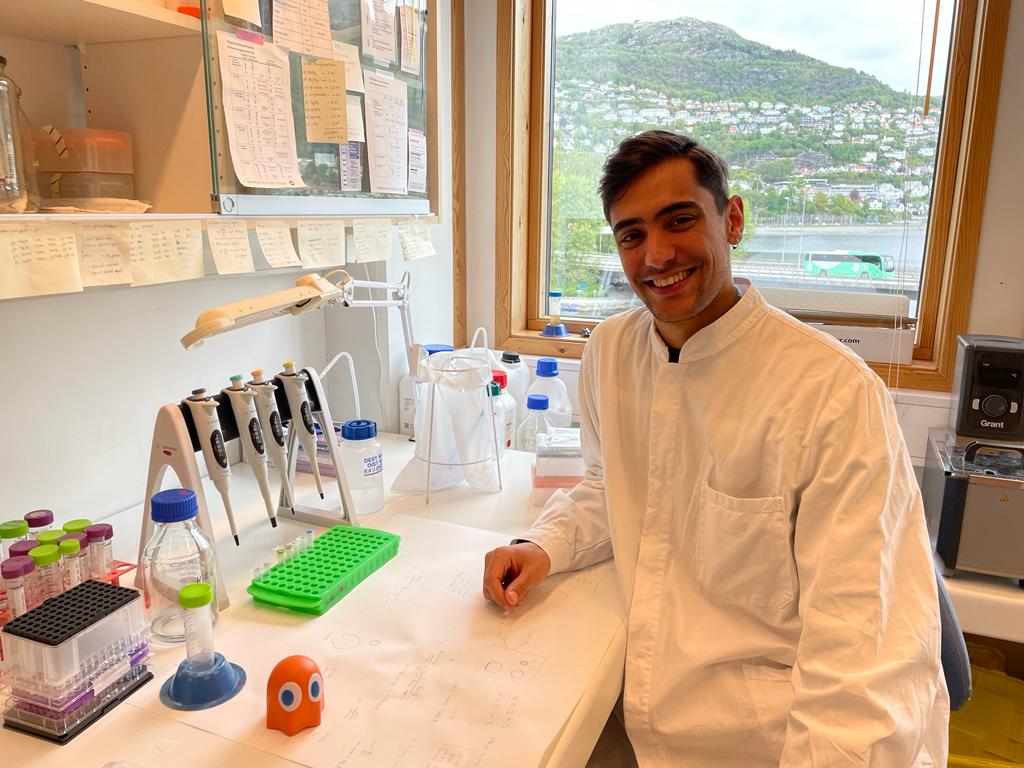OXIPRO is delighted to congratulate Tomás Prado Vargas, a student of Antonio Garcia-Moyano (NORCE), on not only successfully presenting and passing his MSc thesis but also achieving a top grade.
Tomás’s MSc project focuses on bioprospecting for new flavin-containing monooxygenases, or FMOs for short. These enzymes are known to oxidize, among other things, some funky nitrogen and sulphur containing compounds.
In OXIPRO, we use different types of bacterial FMOs to neutralize the molecules associated with unpleasant fish smells. Earlier work revealed the existence of some of these FMOs – presumably affiliated to some eukaryotic organisms – but still, very similar to known bacterial ones. The aim of Tomás’s work was to elucidate if there were actual eukaryotic ones and to determine the extent of their diversity and investigate their functionality in vitro.
Tomás embarked on the project in August last year August and he has successfully combined both computational work and wet lab methodologies to achieve these results. His work indicates that these sequences are really from eukaryotic organisms, and not just derived from an artifact or contamination. Their encoding genes have the typical intercalated structure in coding and non-coding regions. This likely indicates they were acquired by horizontal gene transfer – across the barrier of the species – from some bacterial hosts, and subsequently underwent this fragmentation process in the new eukaryotic host. He has also determined that these FMOs cover a broad diversity of aquatic organisms, ranging from microalgae but also some metazoans, such as blue mussels, water bears and other little critters. Still, all their sequences are more closely related to bacterial counterparts than to any other FMO.
After the in silico analysis, Tomás brought to the lab 23 of these new FMO candidates for recombinant expression and characterization. He has made a significant effort to clone, produce, screen for expression and solubility, purify, and study the catalytic activity against different substrates and cofactors. Some of the FMOs show a certain degree of broadness with regards to substrate and cofactor preference; however, none of the typical molecules associated to fish or sea smell seems to be easily oxidized and they are unlikely to be their native substrates in vivo.
Tomás’s work broadens our understanding of the diversity and evolutionary complexity of the FMO family and will help in further computational and rational engineering of their catalytic properties.
